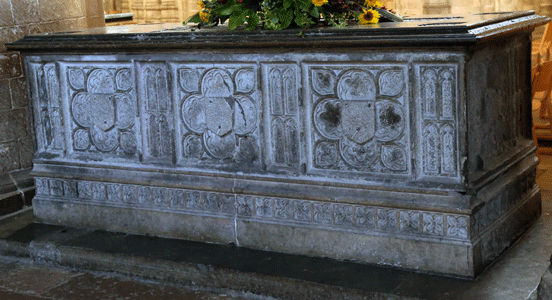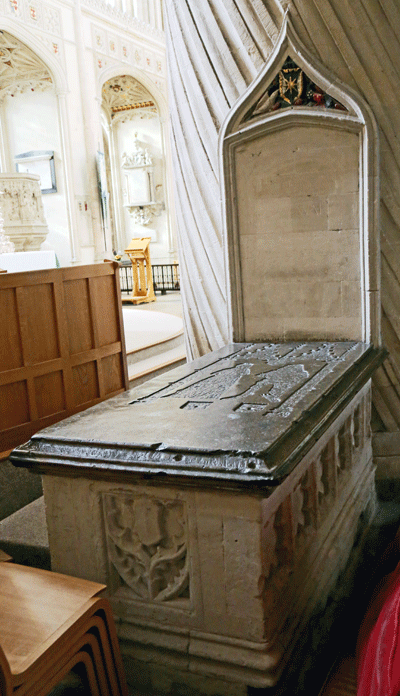| NORFOLK - CITY
OF NORWICH THE CATHEDRAL |
 |
 |
Cathedral Church of the Holy and Undivided Trinity |
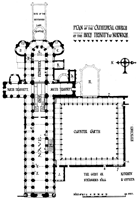 |
 |
| Norwich Cathedral is a Cathedral of the New Foundation: before the Reformation it was a Benedictine Cathedral Priory, being then governed by a prior and monks. The see was founded at Dunwich in 631, moved to Elmham in 673, moved to Thetford in 1070 and finally to Norwich in 1094 |
| Park in one of the City's car park. There is
no charge for entry and photography is also permitted and free
of charge, although they quite reasonably do ask you not to use
flash to photograph old or delicate fabrics. The Cathedral
does ask for a contribution for upkeep but there is no pressure
whatsoever in this; a charge of £5.00 is suggested. This is the
friendliest and most welcoming cathedral I have ever had the
pleasure of visiting; a grateful thank you to the Dean
and all the Cathedral staff for developing and maintaining this atmosphere. Other cathedrals - especially
Durham and Ely - please take note. |
| Ambulatory - North Ambulatory - South Nave - North Aisle Nave - South Aisle Quire North Transept South Transept |
| The Galleries |
| The are a number of 17th and 18th century wall monuments in the triforium galleries. Unfortunately these are galleries not generally open to the public because of safety issues but may be opened on occasions when a member of the staff accompanies the visitors. I will try to arrange a visit in the future and photograph the monuments. For the moment I will list the monuments. |
| Thomas Ivory
(1779) & Hannah (1787) by John Ivory
(North Gallery: the rest are in the South Gallery) Robert Pepper (1700) Thomas Little (1731) Edmund Porter William Burleigh unrecorded |
|
| The Nave - South Aisle |
 Above: Chancellor Spencer (1550) Top with brass indents Right: Bishop Edmund Scambler (1594) High above south door (entrance door). Easy to miss. Next Right: Dean Henry Fairfax (1702) By William Stanton. Words in the inscription relating to the Battle of Naseby have been erased as the Dean and Chapter found them offensive. He was uncle of Sir Thmas Fairfax, General of the New Model Army and commander at Naseby Last Right Top to Bottom: Dean John Wakefield Willink DD (1927); Dean Brunskill Webster KVCO DD (2007) Dean of Norwicj 1970-1978, Dean of St Paul's 1978-1987; Canon Arthur Crompton Moore MA Cantab (1954) Archdeacon of Norfolk 1935-1954. |
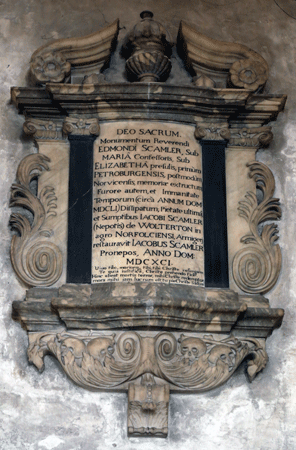 |
 |
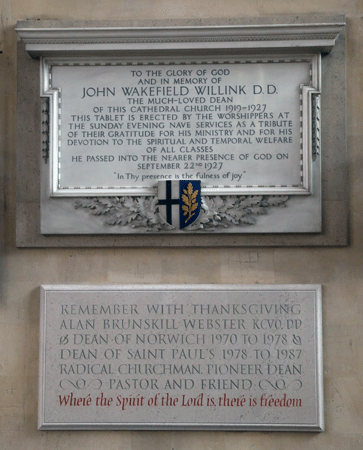 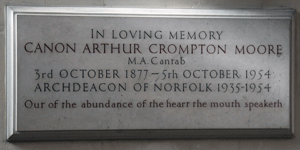 |
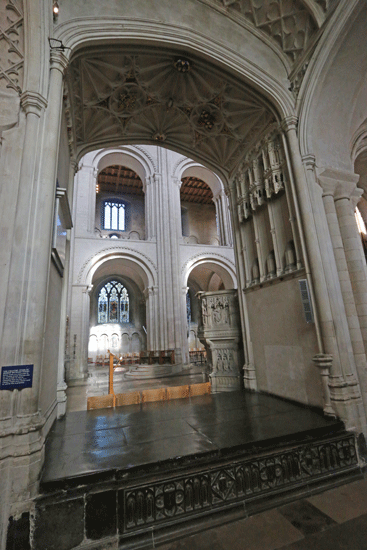 |
 |
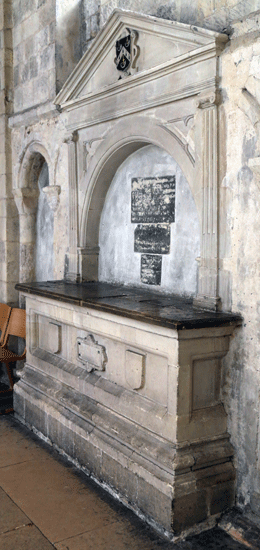 |
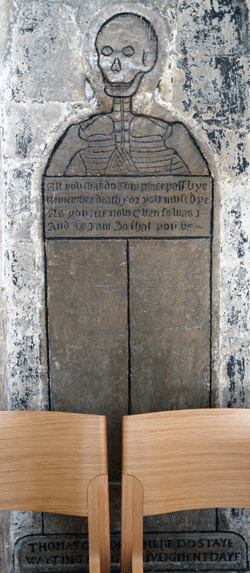 |
| Bishop Nix (1536) | Bishop John Parkhurst (1578) On lid indent for brass cross | Dean Gardiner (1589) | Thomas Gooding (Elizabethan) The inscription is the familiar 'As thou art...etc' |
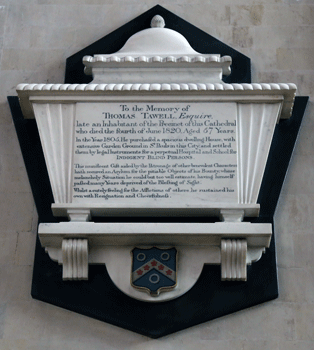 |
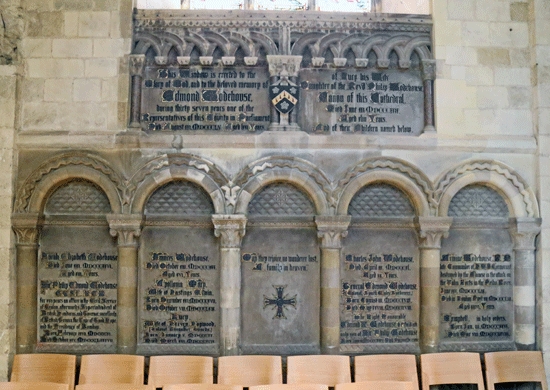 |
 |
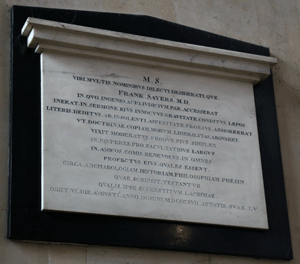 |
| Thomas Tawell (1820) |
Painted monument to the Wodehouse
family and others, see details below Some of the text appears incomplete. |
William Inglot (1621) Organist. Painted monument | Frank Sayers MD |
|
Top Row: 1.
Edmond W. MP (1860)
2. 'of Lucy his wife...'
daughter of Canon Philip W. (1829) 'and
their children named below.' Bottom Row: 1. Sarah Elizabeth W (1826 age 13). Sir Philip Edmund W (1887) Civil servant. 2. Frances W (1830 age 16). Appolonia Mary (1864) wife of Hastings Alwing. Lucy (1894) wife of Hervey Hopwood, Colonel Grenadier Guards. 4. Charles John W (1840 age 20). General Edmund W (1868). Rt Hon Edmund R W MP Illegible date. Only son of Sir Philip 5.Aimine W. (1859) Late commander of HMS Cormorant destroyed by Chinese attack 1859 . Campbell (1867) 'in Holy Orders' |
|||
| The Quire |
 |
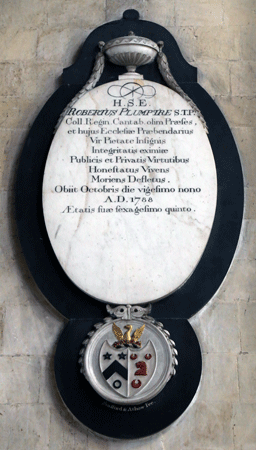 |
 |
 |
 |
| Bishop John Overall (1669) | Robert Plumtree (1788) | John Moore (1725) by Robert Page | Stephen Knight (1664) | John Chamber (1788) by John Ivory |
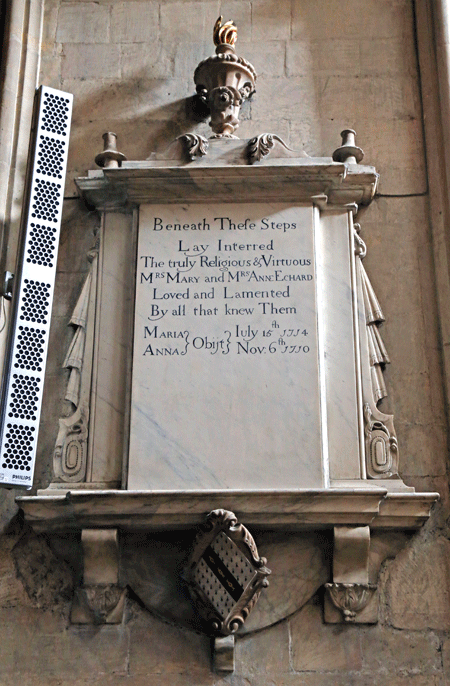 |
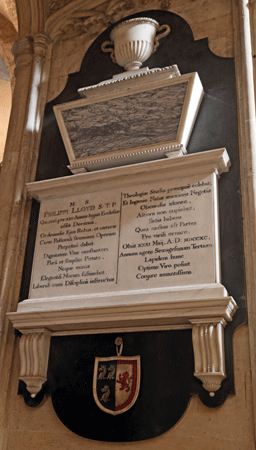 |
 |
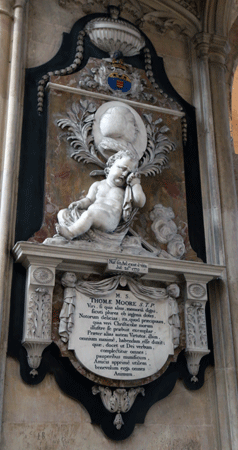 |
| Mary (1714) & Ann (1710) Eschard | Dean Philip Lloyd (1790) by John Ivory | Bishop George Horne (1792) by Stafford and Athow | Thomas Moore (1779) by John Ivory and John DeCarte (signed) |
 |
 Bishop Herbert de Losinga (1119) Left is the top of a table tomb of 1682 which is now set in the pavement. Above is a modern bas relief. In the ambulatory section there is shown a wall mounted effigy which was once thought to be that of the Bishop but is now rather thought to be of St Felix. see below He was the first bishop of Norwich and responsible for the foundation of the cathedral. |
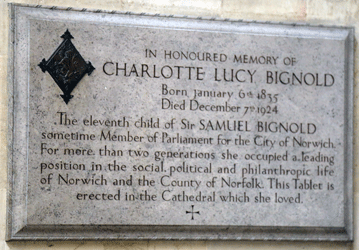   |
|
|
However the tale is a little more seedy. Bishop de Losinga paid King William Rufus £1,900 for the see of Thetford, a deal which also included his father being appointed to the abbacy of the New Minster in Winchester. In 1094 he travelled to Rome to ask the Pope for forgivness for his part in this sin and offence of simony. On his return he transferred the see from Thetford to Norwich according to Archbishop Lancfranc's ruling that bishops should have their see in the principal town of the diocese |
|||
| Far left, top to bottom: Charlotte Lucy Bignold (1924) 11th child of Sir Samuel Bignold MP. Maurice Wood DSC MA RNR (2007) Bisop pf Norwich 1971-1985. Chaplain of a Royal Marines Commando Unit, he swan ashore during the D-Day landings in Normany. A man of curious conflicting chacteristics. John Phips Allcot Bowers DD. (1926) Suffragan Bishop of Thetford. | |||
| North Transept |
 |
 |
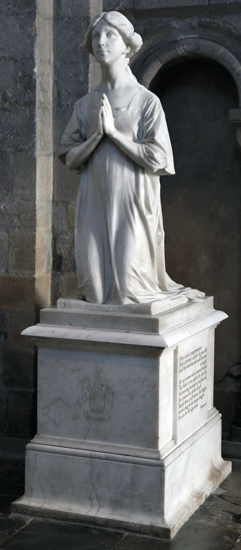 |
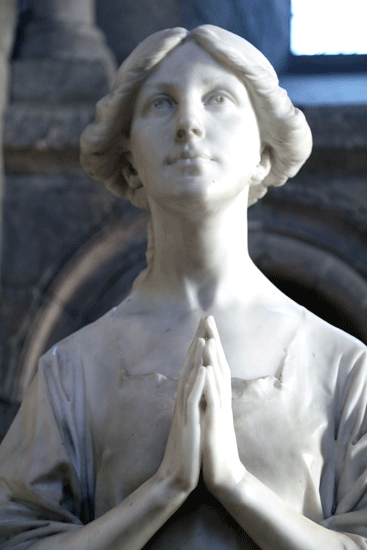 |
 AboveTop Row Columns 1 & 2: Bishop Henry Bathurst (1837) For many years considered to be the only liberal bishop in the House of Lords; considered men fit for ordination on a case by case basis rather than applying a blanket rule. Buried at Great Malvern. By Sir F Chantrey 1841 Columns 3 & 4: Violet Vaughan Morgan (1919) She was secretary to the Bishop of Norwich, Bertram Pollock (1863-1943) and it appears that they were engaged to marry. However she died of Spanish flu at the early age of 22. The inscription on the plinth is by William Wordsworth and one of Violet's own poems - it appears she was a poet of some note - also appears on the plinth. White marble by Derwent Wood (1921). Above and Right: Bishop John Pelham (1896) Alabaster tomb chest with white effigy. By James Forsyth |
 |
 |
| South Transept |
 |
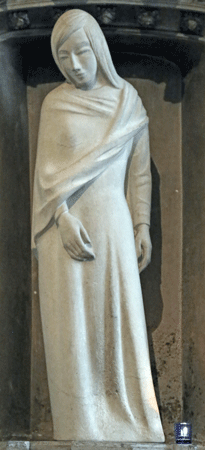 |
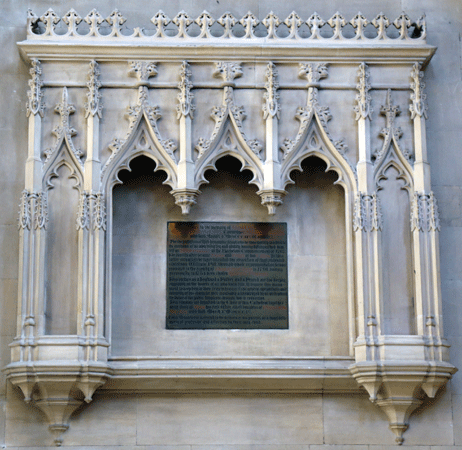 |
 |
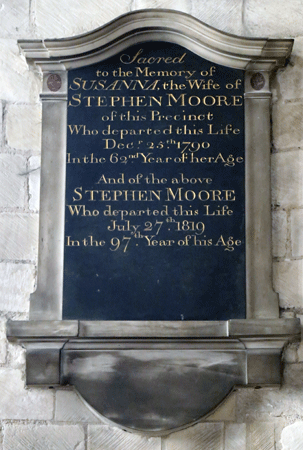 |
| Lt Herbert Gribble
(1943) Died a PoW aged 22 |
Joseph Turner (1808) Dean 1790 - 1808 |
Susanna Addey (1765) |
Susanna Moore (1790) |
|
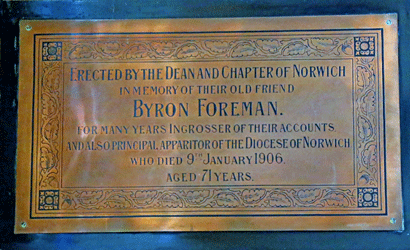 |
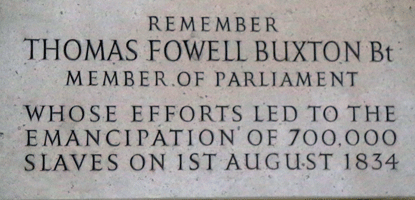 |
 |
| 'Erected by the Dean and Chapter of Norwich
in memory of their old friend...' Byron Foreman (1906) '...for many years Ingrosser of their Accounts and also Principal Apparitor of the Diocese of Norwich.' |
Thomas
Fowell Buxton Bt MP (1845) Brewer, abolitionist and social reformer. He married Hannah, sister of Elizabeth Fry. He opposed capital punishment and, while never accomplishing total abolition, the number of crimes punishable by death were reduced from over 200 to 8. The slave trade had been abolished in 1807 but he presented a petition to parliament leading to the abolition of slavery in the Empire in 1834. |
William Thomas
Bensly LLD FSA (1910) Registrar and Chapter Clerk LLD FSA |
| Ambulatory - North |
 |
 |
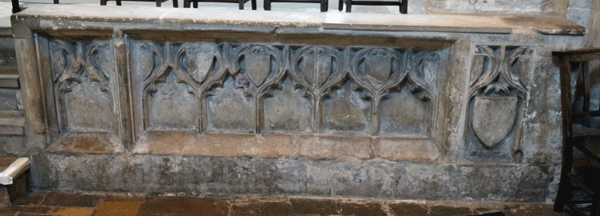 |
|
| Above Top:
Purbeck marble tomb chest lid. 13th century Above Bottom: Base of tomb chest thought to be of Sir Thomas Erpingham (1428) Knight who began his military carreer serving with the Black Prince in Aquitaine and ending by leading a company in the Battle of Agincourt. He loyally served the Lancastrian dynasty and travelled to France, Spain, Scotland, Prussia and the Holy Land. Right: Elizabeth Calthorpe (1582) |
| Ambulatory - South |
  Above and Right: Bishop Goldwell (1499) Although renewed in 1936 some of the painting and gilding may well be original. |
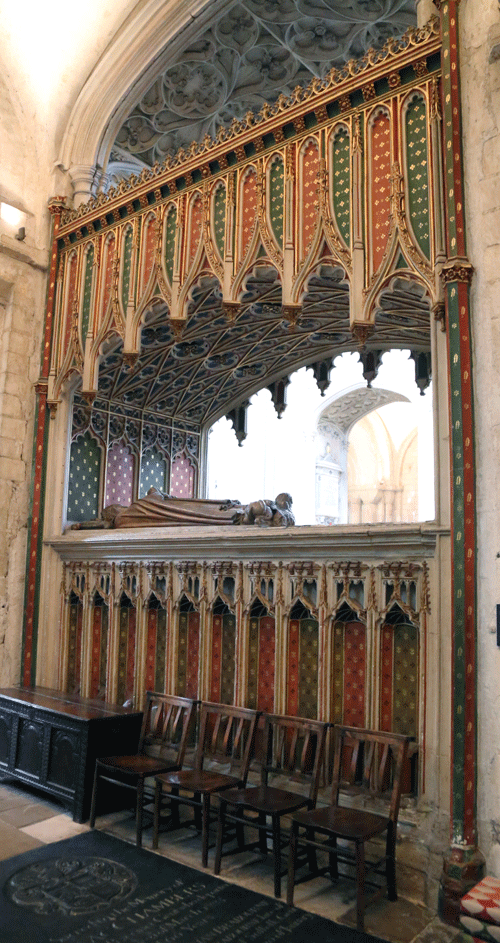  |
 |
 |
 |
Left: William Rolfe (1754) By Thomas Rawlings the Younger Above: Bishop Wakering (1425) Purbeck slab by brass now lost Right: Thomas Bachelor (1729) By Robert Singleton & George Bottomley |
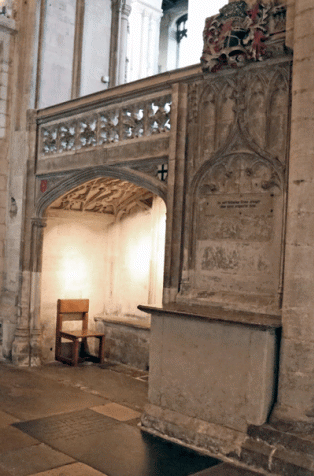 |
 |
| Left: On the
left (in the background) Prior Bozoun (c. 1480)
Chantry chapel and in the foreground: Richard Brome (1500) Above: Although this effigy was once thought to be of Bishop Herbert de Losinga, it is now thought to be a statue, rather than a monumental effigy of St Felix, who brought Christianity to Easy Anglia |
| Unfortunately I lost the note book I used for recording
information when I took this series of photographs so there may
be errors in some of the information above. I have also missed
the following: 1. John Harwood (1713) Ambulatory south 2. C15 niche with canopy. Contains modern state of Virgin Mary I hope to visit Norwich later in the year and I will correct these errors. |

